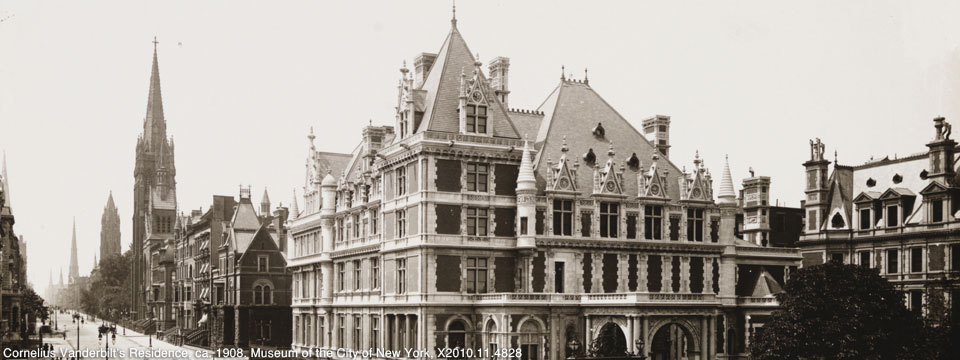New York, the Gilded City and Its Beaux-Arts Masterpieces
by Lisa Chung
“When you go into the Great Hall of the Met or into the Frick, it’s alive and well,” says David Garrard Lowe, president of the Beaux Arts Alliance, speaking about the Gilded Age. “And even if people don’t know what it is, they love it. No one goes inside and says ‘This is terrible.’”
On Nov. 13, the Museum of the City of New York will inaugurate its Tiffany & Co. Foundation Gallery with Gilded New York, an exhibition exploring the city’s visual culture at the end of the 19th century, when its elite class flaunted its money as never before, through a display of dazzling jewelry, lavish costumes, portraits and decorative objects.
As part of the new exhibition, MCNY has invited Lowe, a distinguished cultural historian and author, gave an illustrated lecture on Nov. 21 about the Gilded Age and how beaux-arts architects, influenced by the Ecole de Beaux Arts in Paris, elevated New York society’s taste and gave the city the monuments and buildings we love today.
“Beaux arts gave us a certain oomph and elegance. It made New York a rich, international city,” Lowe says. “It’d been a well-off provincial town, but the beaux-arts architects went out of their way to see that we would be as grand as Paris or Rome.”
The first American to study at the Ecole de Beaux Arts in Paris Richard Morris Hunt, who built a wing of the Louvre, is credited with establishing the first schools of architecture in America and transforming New York’s standard of living through architecture.
The ideals of the Ecole de Beaux Arts lay in the belief that the best design should be based on the classical architecture of ancient Rome and the incomparable structures of the Renaissance. The Ecole believed cities should be beautiful, and that’s the belief Hunt brought with him to New York City back in the mid-1800s.
Upon returning to New York, Hunt built the first beaux-arts chateau for W.K. Vanderbilt using limestone, a bright rock in contrast with the traditional dark brownstone. “It caused a sensation,” Lowe says. “The Vanderbilts were suddenly important. The daughter of the Astors, the captain of society, wanted to be part of the party.”
Prior to the Gilded Age, in which beaux-arts architecture caused a sensation, America had transitioned from the gothic architecture of cathedrals to Moorish, which was known as the reign of terror.
It was Hunt’s chateau constructed for Vanderbilt that began the sensation of beaux-art New York.
“Suddenly New York was like Paris, you walked down Fifth Avenue and you had palaces, you had great department stores, hotels and railway stations. Everywhere you looked it was beaux art. It made things lavish like the old Waldorf,” Lowe says.
“There was the Metropolitan Museum of Art, the New York Public Library, which we know and love, The Frick. It’s all over the city, and then they did great department stores like the old Tiffany’s. It was supposed to be beautiful and urban and sophisticated. Nothing to do with simplicity…. It’s still impressive today.”
About David Garrard Lowe
Lowe is the author of Stanford White’s New York; Beaux Arts New York; Chicago Interiors; Lost Chicago; and Art Deco New York, published by Watson-Guptill.
Lowe has lectured widely in the U.S. and Europe, at the Metropolitan Museum of Art and Cooper-Hewitt Museum in New York, Smithsonian in Washington, Art Institute of Chicago, San Diego Museum of Art, Newport Preservation Society in Rhode Island, American Academy in Rome, and on cruises in the Mediterranean as well as aboard the Queen Mary 2.
Enjoyed this Article?
Uncover more previews of top events and be the first to know about new lectures by joining the Thoughtlectual community at no cost. Click here to join.



 Discover More
Discover More